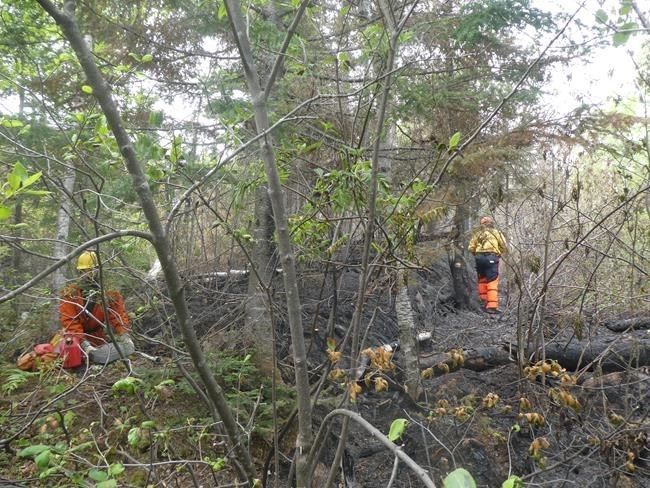MONTREAL — The forest fire situation in Quebec is improving after recent rain, the province's wildfire prevention agency said Monday, though large blazes continue to burn and fire risk remains high in dry areas along James Bay.
The risk of forest fires is now much lower in eastern and southern Quebec, Stéphane Caron, a spokesman for the agency SOPFEU, said in an interview.
"The rain that fell in the past few days helped contain the fires and, as well, the work that has been done over the past month means that even if the fires are still not extinguished, under control, they're much safer than they were, the communities," he said, adding firefighters have worked to secure areas around the blazes where they may threaten communities.
There are currently more than 100 fires burning in the province, including 67 in what SOPFEU calls its "intensive protection zone" — where it systematically fights all fires. Only three of those are considered out of control, particularly in the area around Chibougamau, Que., about 416 kilometres northwest of Quebec City.
But while the provincewide situation has improved, Caron said the risk from the fires isn't yet over.
"There are still risks because the blazes are still huge," he said.
One fire burning near the city of Lebel-sur-Quévillon — which was evacuated twice in June — covers more than 4,000 square kilometres, he said.
That fire has been contained, but is still not controlled, he said, explaining that a contained fire is not currently advancing but could in the future, while a controlled fire is definitely stopped.
"So we have to aim to control the fires, because if there is another period of drought, another period of very hot weather, the fires could rise from their ashes and cause us problems again," he said.
Between 1,300 and 1,400 firefighters are on the ground, Caron said, including 150 South Korean wilderness firefighters who arrived in the province on Sunday.
While Quebec's wilderness firefighters usually work up to 24 days straight, Caron said their work usually comes to an end at points over the summer. But this year, with the work of controlling all the fires expected to take the entire season, it will be difficult to ensure firefighters get the time off they need to recuperate.
While the risk of fires in much of the province has declined, dry conditions continue in the northwestern Jamésie region where several large fires are burning.
That area is in SOPFEU's northern zone, where fires are only fought if they pose a threat to communities or strategic infrastructure.
There are currently 44 fires in the northern zone, a number Caron described as high.
Even though most aren't being actively fought, "the number of fires is still concerning," he said.
Quebec's Natural Resources and Forests Department also announced it had reduced the area covered by an outdoor fire ban. As of Monday, the ban primarily applies in the province's northwest, as well as in two small parts of the Saguenay–Lac-Saint-Jean region.
Restrictions on accessing forests on public land were also relaxed further on Monday.
This report by The Canadian Press was first published July 3, 2023.
Jacob Serebrin, The Canadian Press

